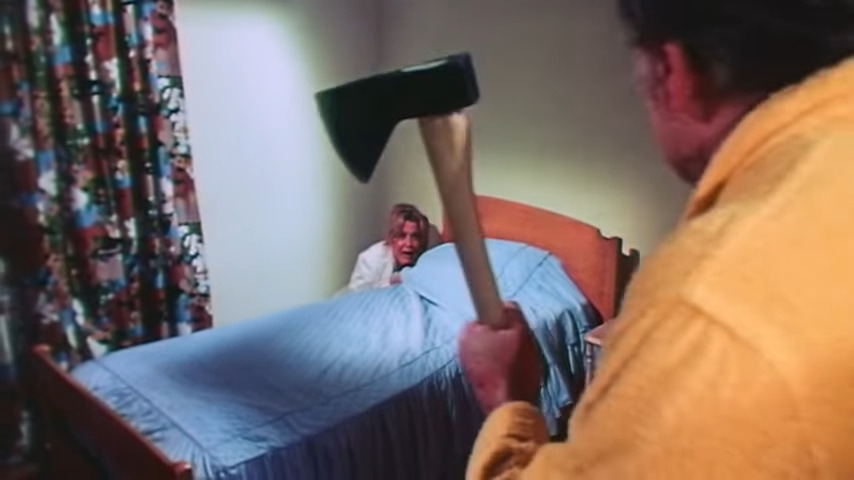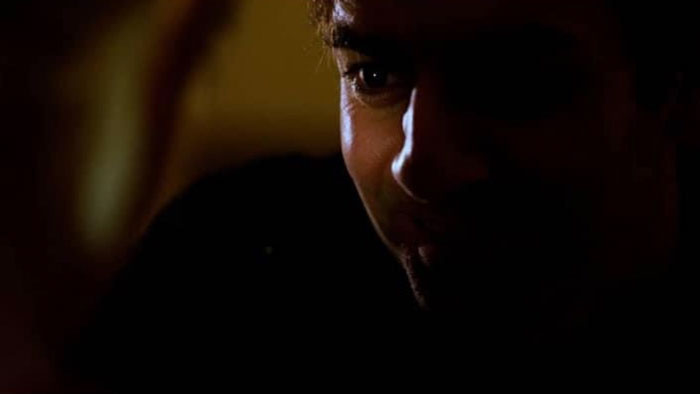Grindhouse Fest: Don’t Look in the Basement (1973)
-Grindhouse Fest is the special section in Celluloid Dimension where you can discover all the goodies from the golden age of exploitation cinema. Have fun!
![]()
Don’t Look in the Basement (1973) Directed by S. F. Brownrigg
S. F. Brownrigg’s bonkers exploitation penetrates the cerebral realms of utter derangement with only a grisly amateurish cinematic layout, which is erratic in its parsimonious gimmicks to provide scares and enigmas, but when it succumbs randomly to the obliteration of all logic -physical and metaphysical- and violates all sacred laws of cinematic coherence, the film achieves the uncanny irrationality of a nightmare with unsettling results.
The premise – a very simple and half-baked one – appropriates the fetish of clinical thrillers: the story of a morbid mental hospital and the troubled coexistence of a rational person and his mentally ill patients. Playboy model Rosie Holotik plays a young nurse who is hired to work at Dr. Stephens’ private sanatorium, but upon arriving at the isolated and gloomy place, the young nurse finds out that Dr. Stephens has passed away and the only one in charge of the hospital is Dr. Masters (Annabelle Weenick), who adopts the same unconventional approach to patient care – according to Dr. Stephens, the best way to treat his patients is to let them be…to wander the corridors and do whatever they please.
The bizarre orchestration of incidents that eventually evolve into a mind-bending climax is a pure exercise in hysteria and neuroticism, at times maddeningly dull. But I somehow get the impression that this could only be so; the low budget is evident and the pattern of cutting – thick and perceptible – doesn’t help either. However, S. F. Brownrigg capitalizes on the mediocrity of his sloppy methodology and gradually adjusts to the insanity of the unexpectedly earnest and affecting performances. It is as if little by little the psychological bewilderment and manic atmosphere establish a spiritual nexus with the anti-aesthetic canvas, mutually interacting in their interchangeable madness. The Forgotten, better known as Don’t Look in the Basement, may not have the professionalism to pull off a thriller of exceptional punch, but it has some hidden talent in that murderous private sanatorium. The patients are a very miscellaneous bunch of personalities, like Sam Fuller’s Shock Corridor, here the patients serve as sociopolitical metaphors; they are a reflection of the prejudices and consternations of contemporary America.
Bill McGhee plays the most striking character of the patients, the mild-mannered and harmless Sam, a black man with a sturdy frame but the heart and mind of a little child. Another of the most intriguing and frightening characters is Judge Cameron (Gene Ross), a sanctimonious man with murderous proclivities. Among other schizoid figures are an out-of-control nymphomaniac, and a neurotic, emotionally dependent young woman. Rosie Holotik as the new young nurse soon finds herself transfixed by the lunacy of these mercurial patients, who push her into a state of helpless paranoia. With these dramatic foundations of a standard psycho thriller crafted on an exploitative plane, S. F. Brownrigg’s film meets all the requirements to make the Video Nasties list – Don’t Look in the Basement eluded prosecution for obscenity but still had many minutes of its most gruesomely damaging gore cut out, and even with strict censorship it remained on the infamous list – by having all the notorious hallmarks that make a Video Nasty “nasty,” the plot is more remembered for its final carnage than for anything that anticipates it. The effectiveness of its blistering climactic violence, however, comes from a controlled tactical work from the outset. The ennui that permeates the opening acts is part of the ritual, without it the finale simply wouldn’t be as vicious and malevolent. Therefore, somehow, I have learned to appreciate this film with all its faults, since the good and the bad here are dependent, they inhabit the same frenzy.
The hair-raising plot twist may not be the cleverest you’ll see, but it’s the crudest and most dizzying you’ll experience in a film of this precarious nature, in terms of budget. It’s precisely the absence of style that renders it unforgettably grimy.






